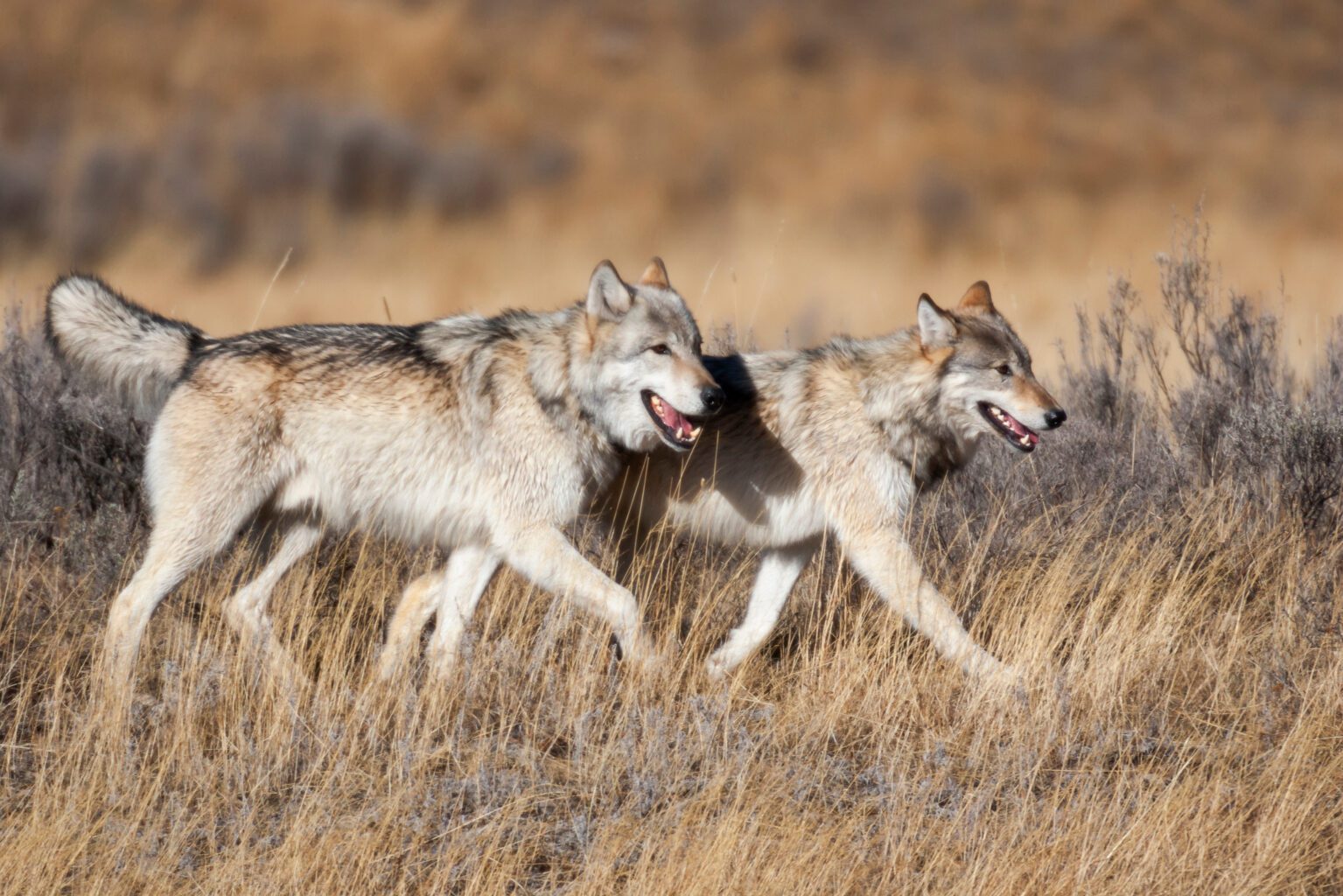Current work in wildlife, rivers, public lands, and climate
Press Releases
Court refuses to limit Montana’s unscientific wolf hunting and trapping season
Today’s news means that Montana’s efforts to kill 456 wolves—nearly 40% of the state’s entire wolf population, based on potentially unsound modeling—during the 2022-2023 hunting and trapping season move forward unabated. On November 15, 2022, the court granted some protections for wolves under a Temporary Restraining Order (TRO) that was in place until the judge’s ruling came out today, which dissolved the TRO.
“We are devastated that the court has allowed countless more wolves—including Yellowstone wolves—to be killed under the unscientific laws and regulations we are challenging,” said Lizzy Pennock, the Montana-based carnivore coexistence advocate at WildEarth Guardians. “We will keep fighting for Montana’s wolves in the courtroom while our case carries on and outside the courtroom in every way possible.”
The lawsuit claims that there are significant flaws in the population model used to estimate the total number of wolves in the state. Since the 456 quota for the 2022-2023 season relies upon a flawed population model, reaching the quota could have devastating consequences on the state’s wolf population. Per allegations in the motion, “Montana does not have an accurate picture of how many wolves are living in Montana and cannot sustainably and legally manage the species through another wolf hunt this winter.”
So far, hunters have killed 69 wolves this season in Montana. The court’s refusal to issue an injunction today means that an additional 387 wolves could be killed between now and March 15, 2023 via hunting, trapping, snaring, shooting wolves over bait, and via hunting at night on private lands with technology including night-vision scopes.
Today’s order also removes the two-wolf kill quota in the wolf management unit (WMU) west of Glacier National Park that was temporarily in place under the terms of the TRO, and reinstates the six-wolf kill quota in the WMU just north of Yellowstone National Park. This means that an additional five Yellowstone wolves could be killed this winter. Last year, recreational hunters and trappers killed 25 Yellowstone wolves, with 19 killed in Montana.
“Today, Montana’s wolves and wild places lost an important battle but the greater campaign to protect North America’s wildlife and evidence-based democratic decision-making continues,” explained Michelle Lute, PhD in wolf conservation and carnivore conservation director for Project Coyote, a project of Earth Island Institute. “What happens to wolves in Montana doesn’t stay in Montana because wolves and the benefits they bring aren’t restricted by geographic boundaries. Protecting a robust source population of wolves in the state has broader implications for wolf populations, genetic exchange and healthy wildlands in surrounding states, national parks and Canada.”
The original lawsuit filed on October 27, 2022 against the State of Montana, Montana Department of Fish, Wildlife and Parks (MFWP) and the Montana Fish and Wildlife Commission includes the following five claims:
- a claim that respondents violated the MAPA and state constitution by amending the 2002 wolf plan to allow the use of a new wolf population model, without following proper rulemaking procedures, including scientific review or public participation;
- a claim that Montana violated state law by establishing a quota and issuing wolf hunting and trapping licenses based on reliance on a stale wolf plan;
- a claim that Montana has failed to manage the state’s wolves for the benefit of the public as a whole in violation of the state’s Public Trust Doctrine as enshrined in Montana’s constitution;
- a claim that the state’s anti-wolf legislation, regulations, and quotas interfere with federal policy in the management and administration of multiple national parks in the state, and are thus preempted by the federal law (National Park Service Organic Act); and
- a claim that the state’s anti-wolf legislation, regulations, and quotas interfere with federal policy in the management of public lands by the Bureau of Land Management and U.S. Forest Service, and are thus preempted by federal land management statutes.
BACKGROUND: In 2021, Montana Governor Greg Gianforte signed four bills designed to reduce the state wolf population. Senate Bill 314, codified at MCA § 87-1-901, provided that the Commission was to reduce the wolf population to a “sustainable” level, and authorized the Commission to permit a variety of aggressive hunting tactics. House Bill 224, codified at MCA § 87-1-901, requires the Commission to allow the use of snares for trapping, and House Bill 225, codified at MCA § 87-1-304, gives the Commission authority to extend the wolf trapping season. Finally, Senate Bill 267, codified at MCA § 87-6-214(1)(d), allows private parties to offer bounties in exchange for proof of the hunting or trapping of wolves.
On August 21, 2021, the Commission adopted four regulations implementing these new laws. These votes followed a public process in which the Commission received more than 26,000 public comments, most of which opposed aggressive wolf-hunting tactics. The Commission set wolf quotas in seven regions, and provided for the Commission to review the regulations if 450 wolves were killed. The regulations also allowed the use of neck snares in addition to leg snares, the use of bait, nighttime hunting on private lands with spotlights, and a “bag limit” of 20 wolves for each individual via hunting and trapping. The Commission adopted similar regulations on August 25, 2022, allowing up to 456 wolves to be killed.

Yellowstone National Park, two gray wolves move through the dry grass.